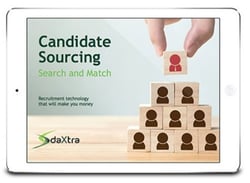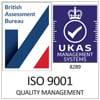You're probably sitting on a gold mine
By M. Christine Watson, Marketing Director, DaXtra Technologies
Facts, figures, statistics, details, particulars. You know? All those bits and bytes of information you’ve been gathering and storing from years of sourcing and collecting resumes, candidate material, profiles and cover letters? Yes, that data. According to The Economist, “The world’s most valuable resource is no longer oil, but data.” This isn’t a brand new concept. Clive Humby, UK data scientist at Starcount, Mathematician and co-founder of Dunnhumby, is widely credited for coining the phrase, “Data is the new oil,” back in 2006. Big data is now considered one of our most prized resources.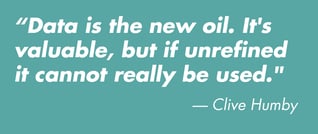
What does this mean for you as a recruiting and staffing firm, or as a corporation with an ATS or CRM loaded with candidate data? It means the information you hold could be your most valuable asset. An article in Information Age, said it best, “It is how we make use of data that allows us to fully recognise its true value and potential … and from a business stand point, measure it against the result of positive business outcomes.”
Rather than “oil” we prefer likening it to “gold.” All those candidates, are like rough nuggets just waiting to be mined. But first, there is the mining, sifting, purifying… There is a huge amount of work to be done to end up with refined gold. But with the right tools, it can be done with speed and efficiency.
There are many ways a candidate’s data may have landed in your ATS or CRM. The data you possess may be from:
- Searched or sourced material, ie: candidate profiles, CVs/resumes, applications
- Candidates responding or applying via email
- Applicants filling in application forms on your website
- Social connections or marketing campaigns on Twitter, LinkedIn, Facebook
- Notes from calls and face-to-face meetings
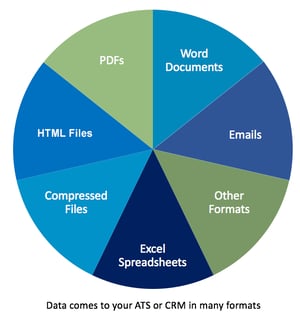
The data may be in a myriad of formats:
- Word documents
- PDFs
- Emails
- Excel spreadsheets
- HTML files
- Compressed files
- OR any number of other formats
The burning question comes back to how to get this data into one localized place and in a format you can use, leveraging that data. After all, there is little use in having the data if you don’t make it work for you.
So how? The answer, though complex in theory, is simple.
Gold Dust into Bullion
You’re sitting on this disparate data, but it’s just that — various pieces of information that you can’t do anything with. It’s not localized in one place and it’s not in a format you can search over. How do you even begin to locate, categorize and upload all of this varying material? It’s like having gold dust mixed into a bucket of iron ore. You spend days sifting by hand, and then you have a pile of gold dust, but not quite the gold bullion you’re looking for.
 With the right tools, the process of refining the data is simple. You will want a solution that is able to locate and index the many pieces of disparate data you have throughout your system, and then upload that information directly to your ATS, CRM or RMS.
With the right tools, the process of refining the data is simple. You will want a solution that is able to locate and index the many pieces of disparate data you have throughout your system, and then upload that information directly to your ATS, CRM or RMS.
Candidates move, get degrees, gain a new skill, have a job change, get certifications. Records are constantly changing. There are potentially hundreds of data tables of information like this that are contained in resumes and profiles that a state-of-the-art automation solution should be able to gather and index, updating existing profiles in your system or creating new candidate profiles. A solution that is able to constantly index, deduplicate and update the information you have is crucial for staying on top of this constant flux.
Not only should it index all of this material, it should also convert this unstructured data into a rich structured format. And going forward, it should enrich all incoming content making sure that every resume from every source is parsed and a candidate profile is created containing the most enriched information you’ve ever seen, which you will be able to search over and utilize. There’s your gold bullion!
Candidate Nurturing
Another critical aspect of a successful recruiting practice is keeping in contact and nurturing the candidates you have. Some of the candidates who were previously in entry-level or junior-level positions may now be in more senior level positions. Some you may have placed, but now may be ready to move on from their current jobs. Staffing Industry Analysts reports that, according to data from the Monster Worldwide Inc. 2019 State of the Candidate report, one third of Americans plan to look for a new job this year. This could mean it’s possible that one in three of the passive candidates in your database will become active as they’re looking for jobs again… and that doesn’t count the already active candidates who are pursuing jobs. Right there is an extensive pool of candidates to draw from and it’s important to have their current information to be able to maintain contact and stay in touch, nurturing each so they progress along your pipeline. Once candidate shortlists are created, this tool should automate that process through other third parties in the ecosystem of your ATS or CRM, so texting platforms or automated emailing services are ready to jump in and do their part in the nurturing process.
in entry-level or junior-level positions may now be in more senior level positions. Some you may have placed, but now may be ready to move on from their current jobs. Staffing Industry Analysts reports that, according to data from the Monster Worldwide Inc. 2019 State of the Candidate report, one third of Americans plan to look for a new job this year. This could mean it’s possible that one in three of the passive candidates in your database will become active as they’re looking for jobs again… and that doesn’t count the already active candidates who are pursuing jobs. Right there is an extensive pool of candidates to draw from and it’s important to have their current information to be able to maintain contact and stay in touch, nurturing each so they progress along your pipeline. Once candidate shortlists are created, this tool should automate that process through other third parties in the ecosystem of your ATS or CRM, so texting platforms or automated emailing services are ready to jump in and do their part in the nurturing process.
Data Integrity
Your database is unique! It’s filled with pre-qualified candidates that are exclusive to your recruiting specialty. 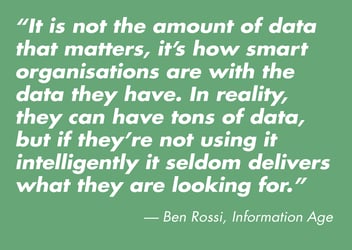 It’s filled with data that is unique to your business and to you as an organization. Gold, if you will. Many hesitate to mine from their own databases because they feel like the data is bad: there are duplicates and outdated or incomplete information. Because of this bad data, their databases can be difficult to search over. You need tools that will help extract all of that information which is buried in unstructured formats, populate the data tables with information like work history, education, location data, contact information —and then normalize it. You need tools to clean up legacy data to make it searchable.
It’s filled with data that is unique to your business and to you as an organization. Gold, if you will. Many hesitate to mine from their own databases because they feel like the data is bad: there are duplicates and outdated or incomplete information. Because of this bad data, their databases can be difficult to search over. You need tools that will help extract all of that information which is buried in unstructured formats, populate the data tables with information like work history, education, location data, contact information —and then normalize it. You need tools to clean up legacy data to make it searchable.
Use It!
The key is the ability to search over not only external sources, but semantically search over the internal data on your local database. Instill a standard operating procedure in your recruitment process that follows searching your internal database before external searches are conducted. Set in place a process where your recruiters are required to search your database first before conducting costly external searches. A system that presents the local talent first is important. Take advantage of the information you already possess. You’ve spent a lot of money building your database, so use it. Put it to work in mining the gold!
For further information on building your database through candidate search and match, and how it has evolved — and to explain some of the key functionality available both now and in the
future, have a look at our white paper on the subject Candidate Sourcing.


